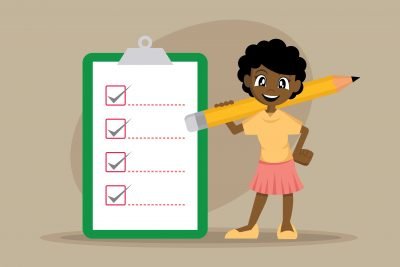Here is basic guidance about how special education works. For a bit more detail, visit How Special Education Works A 10-Step Guide to the Special Education Process provided by Washington’s Office of Superintendent of Public Instruction (OSPI). Procedural Safeguards protect family and student rights throughout the process.
- Referral: Is there a known or suspected disability condition that may significantly impact educational access? If yes, family or anyone with knowledge of the student can request an evaluation from the school district in writing.
- Consent to evaluate: The school district has 25 school days to consider the referral and whether to evaluate. Family signs consent for an evaluation to begin.
- Initial Evaluation: The district has 35 school days to conduct an evaluation that comprehensively addresses all areas of suspected disability.
- Initial Evaluation Report: Family and school meet to review the findings. Discussion includes:
- What did the evaluation find?
- Is the student eligible?
- What category of disability is the right fit for eligibility?
- What services is the student eligible for?
- Does the family have suggestions for goal areas or accommodations that school staff can consider for the initial IEP draft?
- Eligibility and Consent: For special education and related services to begin, family signs consent.
- Creating an Individualized Education Program (IEP): An IEP team meets within 30 days of the eligibility determination to write the IEP.
- A DRAFT IEP may be reviewed and discussed. Family can request a copy of the DRAFT before meeting.
- The team decides what the final IEP includes.
- School provides family with Prior Written Notice after the meeting to reflect the discussion and actions being taken.
- Family has an opportunity to request further changes or more meetings.
- Special Education Begins: All teachers and service providers receive a copy of the IEP and implement the services, accommodations, and other elements of the program.
- Progress Monitoring and Annual IEP Review: The IEP team meets to discuss the program at least once a year. Changes can be made then or any time a team meeting is called because of concerns raised by the family or school.
- Reevaluation: The student is re-evaluated at least every 3 years to determine ongoing eligibility and to assess any needed changes to the program. If a student’s needs change, reevaluation can happen sooner.
- Transition: By the time a student turns 16, the IEP must have a plan in place for when the student will either graduate from high school or continue to receive school-based services, an option through age 21. Postsecondary goals drive the IEP process from that point forward.

